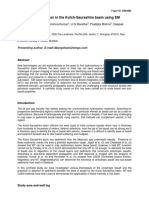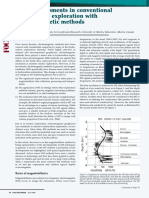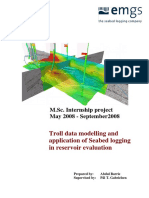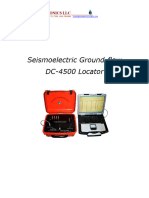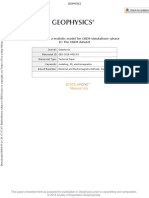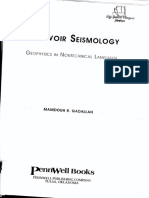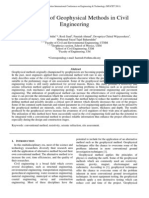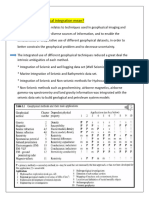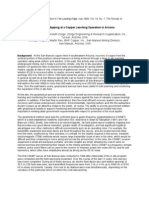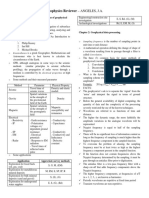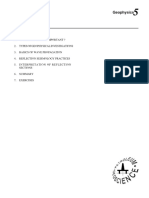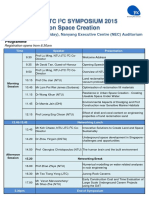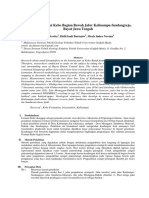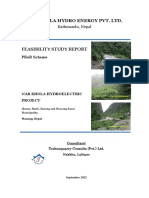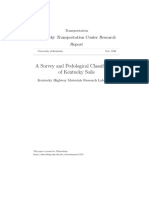0% found this document useful (0 votes)
26 views8 pagesNov2023 Tutorials All
The document discusses Controlled Source Electromagnetics (CSEM) as a complementary technology to seismic methods in oil and gas exploration, highlighting its ability to distinguish between hydrocarbon and brine-saturated reservoirs. CSEM operates on electromagnetic principles and provides valuable data on reservoir geometry and characteristics, although it has limitations such as applicability only in marine environments. The document also outlines the methodology, benefits, and various applications of CSEM in the upstream petroleum value chain, emphasizing its role in reservoir detection, volumetrics, and monitoring.
Uploaded by
himanshu.b1984Copyright
© © All Rights Reserved
We take content rights seriously. If you suspect this is your content, claim it here.
Available Formats
Download as PDF, TXT or read online on Scribd
0% found this document useful (0 votes)
26 views8 pagesNov2023 Tutorials All
The document discusses Controlled Source Electromagnetics (CSEM) as a complementary technology to seismic methods in oil and gas exploration, highlighting its ability to distinguish between hydrocarbon and brine-saturated reservoirs. CSEM operates on electromagnetic principles and provides valuable data on reservoir geometry and characteristics, although it has limitations such as applicability only in marine environments. The document also outlines the methodology, benefits, and various applications of CSEM in the upstream petroleum value chain, emphasizing its role in reservoir detection, volumetrics, and monitoring.
Uploaded by
himanshu.b1984Copyright
© © All Rights Reserved
We take content rights seriously. If you suspect this is your content, claim it here.
Available Formats
Download as PDF, TXT or read online on Scribd
/ 8




